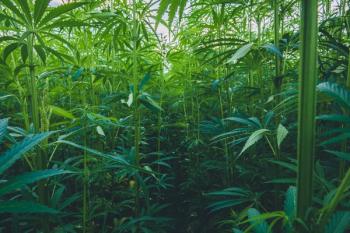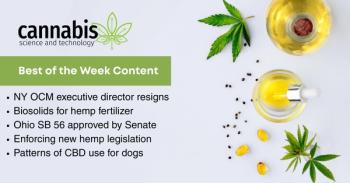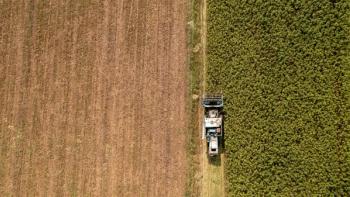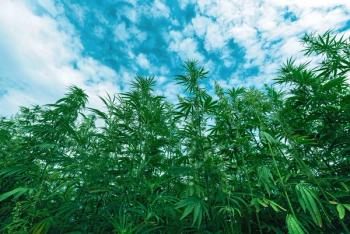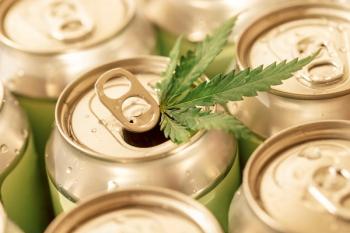
Cannabis Science and Technology
- May 2021
- Volume 4
- Issue 4
Hemp Testing Insanity IV: Problems with the USDA’s Hemp Sampling Rules

Why the USDA’s requirements on what part of the plant to sample and how to obtain samples from the field are rife with problems and how to solve them.
The United States Department of Agriculture (USDA) issued its final rule on hemp production, sampling, and testing in January. The requirements on what part of the plant to sample and how to obtain samples from the field are rife with problems. Here, we discuss these problems and propose a better way.
The United States Department of Agriculture (USDA) recently released their final rule entitled “Establishment of a Domestic Hemp Production Program”(1). This was preceded by an Interim Final Rule (IFR) (2), all in support of the 2018 Farm Bill establishing the legality of hemp production in the United States (3). In regards to hemp testing, in conjunction with the final rule the USDA issued a “Laboratory Testing Guidelines U.S. Domestic Hemp Production Program” (4). Additionally, the USDA released a document entitled “Sampling Guidelines for Hemp
Growing Facilities” (5).
In three previous columns I criticized the USDA for their lack of scientific rigor in their proposed rules in a series of articles called “Hemp Testing Insanity” (6–8). Myself and thousands of others took advantage of the public comment period after issuance of the IFR to advise the USDA on best sampling and analysis practices. Unfortunately, now that the final rules are in place it appears the public comments were ignored as few of the suggestions the scientific and hemp farming communities asked for were incorporated. Thus, the sad need for a fourth installment in the “Hemp Testing Insanity” series. Here, I criticize the USDA’s proposed methods of sampling hemp grows and propose solutions.
“Because That’s Where the THC Is!”
In the 1930s, infamous bank robber Willie Sutton’s illegal activities landed him on the Federal Bureau of Investigation's (FBI) 10 Most Wanted list. When asked why he robbed banks he simply said, “Because that’s where the money is!” The USDA’s sampling guidelines specify that inflorescence (flower) samples be cut from “…the top one-third {1/3} of the plant.” The USDA defended this approach by saying that flowers from the top 1/3 of the plant only should be sampled because that’s where the tetrahydrocannabinol (THC) is (1). This flies in the face of several well known facts.
- The point of testing any marketed product is to analyze what is actually sold. The article of commerce in the hemp industry is typically—whether the crop is to be used for food, fiber, or cannabidiol (CBD) extraction—the whole plant ground up. This means the required sampling plan is not representative of what is being bought and sold by the industry.
- We also know in cannabis plants that the cannabinoids concentrate in the flowers, and that the flowers from the top of the plant contain more cannabinoids than flowers from the middle or the bottom. Flowers from the top 1/3 of the plant then contain more cannabinoids than any other part of the plant. This is again not representative of the plant as a whole, and guarantees that the number of failed grows will be maximized by analyzing the part of the plant with the most THC. This is grossly unfair to hemp farmers, and is a threat to the existence of the industry.
- One of the purposes of any food or drug testing protocol is to insure that a product’s label accurately describes what a consumer is purchasing. By forcing the industry to test a part of the plant that differs in potency from the part of the plant that is actually sold, the testing is not doing its job because it will mischaracterize what the public is getting. Imagine if we took the same approach with milk testing. If left to stand the cream in raw milk will literally rise to the top. The cream is made up mostly of fat. We will thus have an inhomogeneous sample with more fat at the top than the bottom. The milk we buy at the grocery store is often “homogenized,” which means the fat globules are busted up and mixed in with the rest of the milk to give a product where the fat distribution is homogeneous. And of course the milk carton carries a label stating the percent fat. If we were to follow the USDA’s “because that’s where the THC is” mantra, or in this case “because that’s where the fat is,” we would test the cream at the top for fat and put that number on the homogenized milk carton label rather than the percent fat in the actual homogenized milk—always overstating what is in the carton and resulting in a mislabeled product.
Because Everyone Thinks Alike
I like to say that hemp is like America—no two people are the same and no two hemp plants are the same. This means that to sample a hemp grow properly a robust representative sampling plan needs to be in place, such as the one I have proposed previously (10). As in the IFR, the USDA’s final regulations use a formula for determining the number of plant samples to take per lot based on acreage, and for small plots to collect one sample per acre. I roundly criticized this approach in a previous column (7). I pointed out that the number of hemp plants per acre, the density, varies widely across the country. A sample taken from an acre with 10,000 plants is not as representative as a sample taken from an acre with 1000 plants in it. To minimize sampling error, the sample size needs to be determined by the population size from which you are drawing the sample, which is in this case the number of hemp plants not the acreage they occupy (7). As I pointed out (7), this approach is like using geographical area rather than population to determine who to talk to when taking an opinion poll. Using the USDA’s methodology we would talk to more people in Alaska than New York City because Alaska is bigger in area than New York City, even though Alaska has 10 times fewer people, to create our poll. Of course the resulting poll would not be representative of the opinion of Americans as a whole. A wise person once said that the definition of insanity is doing the same thing over and over again expecting different results. By reiterating this nonrepresentative sampling rule over and over again, the USDA most certainly is promoting hemp testing insanity. I believe my approach of basing the sample size on density is more scientifically sound (10).
Because Farming Is so Reproducible!
The formula the USDA uses to choose the number of samples to collect from a lot uses a parameter based on “…past experience in the same or similar growing areas” (1). There are a number of problems with this. The first is that farming is not reproducible. Even if you plant the same strain of the same crop in the same field from year to year, variations in the weather, soil conditions, insect infestations, and so forth will cause the chemical composition of the plants from year to year to vary. Second, since hemp has only been legal to grow nationwide for a few years, the needed historical data to use this formula does not exist! There are hundreds of hemp strains, and an incredible variety of environments across the country where hemp is grown. Unless, for example, we have multiple years of the chemical composition of the hemp strain Cherry grown in eastern Oregon, the formula proposed by the USDA is useless.
The Hemp Industry Is Left Holding the Bag
The USDA sampling rules call for collecting a number of hemp samples across a lot, as many as 100 for lots of 150 acres or more. This make sense, the bigger the population the bigger the sample size needs to be. And then they go and ruin it all by putting all those cuttings into one bag and saying that it must be composited. First of all, you are going to need something the size of a garbage bag to collect a hundred hemp samples if you have a big grow. But the biggest problem is that there are no instructions on how to composite such a sample. Imagine what you will see when you look into that big bag of cuttings-buds, stems, leaves, and seeds. That is, a sample that is inherently inhomogeneous. When that bag is delivered to a laboratory they will most likely not composite the whole bag full of cuttings, but will grab a handful, grind it up, and analyze that. This, of course, is not representative. Where are the instructions on how to composite such a large sample? Another practical problem is that laboratories are not used to handling and compositing samples greater than a few grams in size. I doubt most laboratories have a grinder big enough, for example, to uniformly grind samples that weight 100 g or more. And lastly, assuming we did manage to composite that large of a sample, the regulations only require one aliquot of that composite be tested. This is also by definition not representative. We have no idea if this composited sample is uniform or not, and the only way to get around this is to test multiple aliquots and average the results. The USDA gets around this problem by stating that there are no analytical methods available that are accurate, fast, and inexpensive enough to handle this sample load (2). As I have been pointing out throughout numerous columns (6–8, 11), and through my own peer-reviewed work (12,13), infrared spectroscopy is up to this challenge.
Conclusions
The hemp sampling rules issued by the USDA suffer from problems. Requiring that buds from the top 1/3 of the plant be tested means samples will have enriched amounts of cannabinoid in them compared to the plant as a whole. The formula for determining the number of samples to collect in a lot uses the acreage of the lot rather than the number of plants, ignoring the fact that the population size being sampled is determined by the number of plants not how much space they take up. This same formula uses a parameter based on previous growing experience, the problems with which include the irreproducibility of grows from year to year, and the lack of the needed historical data. Lastly, all the samples collected from a lot are composited together. No guidance is given on how to go about homogenizing such an inhomogeneous sample. In addition, only testing one aliquot of the composited sample assumes the sample is homogeneous, which is not necessarily the case.
References
Federalregister.gov/d/2021-00967 .https://www.federalregister.gov/documents/2019/10/31/2019-23749/establishment-of-a-domestic-hemp-production-program .- 115th United States Congress, Senate Bill S.2667,” Hemp Farming Act of 2018”.
Hemp Testing Guidelines Issued January 15, 2021 (usda.gov) .Hemp Sampling Guidelines Issued January 15, 2021 (usda.gov) .- B.C. Smith, Cannabis Science and Technology 2(5), 10-13 (2019).
- B.C. Smith, Cannabis Science and Technology 3(3), 12–15 (2020).
- B.C. Smith, Cannabis Science and Technology, 4(2), 10-13 (2021).
- Willie Sutton — FBI.
- B.C. Smith, Cannabis Science and Technology 3(6), 10-13 (2020).
- B.C. Smith, Cannabis Science and Technology 2(6), 10-14 (2019).
- B.C. Smith and C.A. Fucetola, Cannabis Science and Technology 3(6) 24–38 (2020).
- B.C. Smith, Cannabis Science and Technology 2(6), 28-33 (2019).
About the Columnist
Brian C. Smith, PHD, is Founder, CEO, and Chief Technical Officer of Big Sur Scientific. He is the inventor of the BSS series of patented mid-infrared based cannabis analyzers. Dr. Smith has done pioneering research and published numerous peer-reviewed papers on the application of mid-infrared spectroscopy to cannabis analysis, and sits on the editorial board of Cannabis Science and Technology. He has worked as a laboratory director for a cannabis extractor, as an analytical chemist for Waters Associates and PerkinElmer, and as an analytical instrument salesperson. He has more than 30 years of experience in chemical analysis and has written three books on the subject. Dr. Smith earned his PhD on physical chemistry from Dartmouth College. Direct correspondence to:
How to Cite this Article
B. Smith, Cannabis Science and Technology 4(4), 10-12 (2021).
Articles in this issue
over 4 years ago
New Age Artificial Intelligence for Cannabis Production?over 4 years ago
There’s a Surplus of Hemp in the Market: What Happens in 2021?Newsletter
Unlock the latest breakthroughs in cannabis science—subscribe now to get expert insights, research, and industry updates delivered to your inbox.

